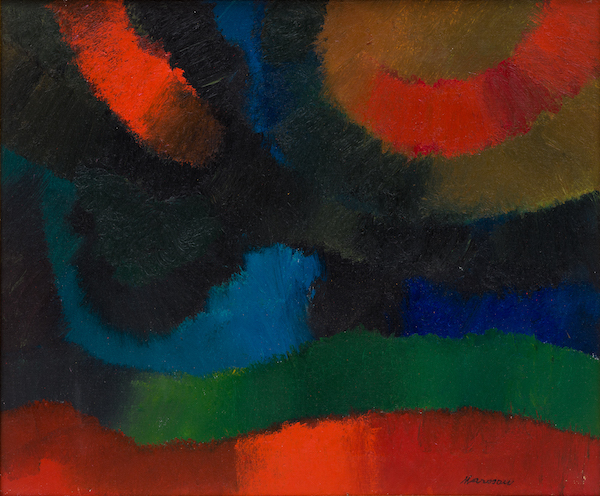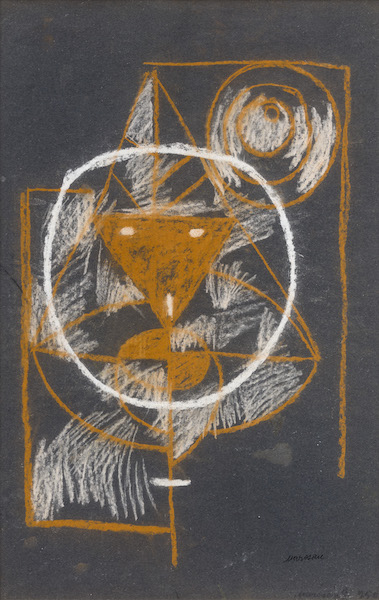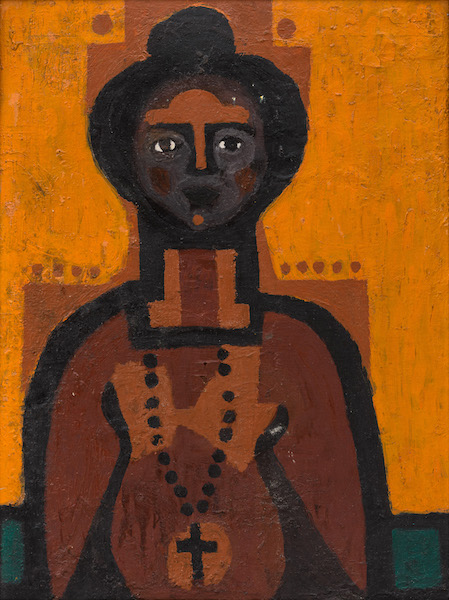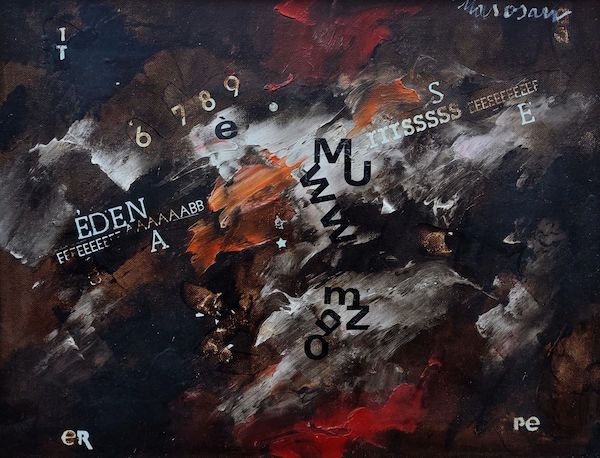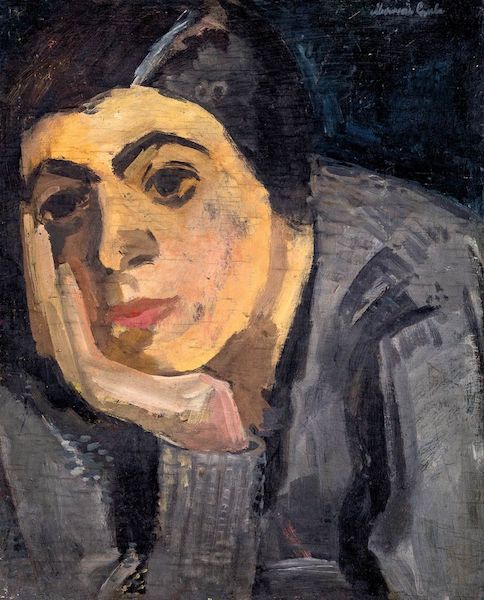Biography
Gyula Marosán is a dominant figure in non-figurative painting in Hungary after the Second World War. He began to practice his lyrical, organic abstract art at the same time as Hungarian artists such as Tihamér Gyarmathy, Endre Rozsda or Lajos Barta. He took part in the exhibition of Abstract Artists after the Second World War, organized around the European School and Ernő Kállai, and continued his abstract creative activity even after moving to Canada. He left behind a strictly unified, worthy oeuvre.
Gyula Marosán attended the School of Industrial Drawing in 1931, and Vilmos Aba Novák's School of Painting between 1932 and 1938. There he met László Bényi, Tibor Duray, Ferenc Redő, Endré Rozsda and his first wife, Magda Zemplényi, and became friends with Endre Bálint. His first solo exhibition took place in 1935 at the age of twenty at the Ernst Museum. His tight, neoclassical paintings - with which he won the Youth Prize of the Szinyei Society - reflect the influence of the style of Vilmos Aba-Novák, Gyula Derkovits and István Szőnyi. In the summer he worked at the artist colonies in Szolnok and Kecskemét. In 1937, together with Tibor Duray, he assisted Aba-Novák in painting the Hungarian pavilion of the Paris World's Fair.
In the second half of the 1930s, he came into contact with Imre Ámos, Anna Margit, Lajos Vajda, Endre Bálint and Dezső Korniss. Through their mediation, he became acquainted with two major trends in contemporary European art, the abstract and surrealism, and began to create in these styles. He had a close friendship with Imre Pán. He made his first non-figurative series in 1939, and from the early 1940s he continued to paint in the spirit of the “new romance”. The special language of his non-figurative works gradually developed, in which Ernő Kállai's theory of bioromance also played a significant role. In his early works, signs of surrealism, constructivism, and cubism, and later nonfigurativeness, prevailed. Its pure colors, poignant lines and amoeba-like forms created one of the most positive lines of Hungarian abstract art. In 1945, he participated in the fine art exhibition of the Social Democratic Party with József Jakovits and Tamás Lossonczy at the Ernst Museum. He took part in grouping experiments uniting such artists as the Danube Valley avant-garde led by Tihamér Gyarmathy and the Hungarian group of Concrete Artists, which also included Gyarmathy and Lossonczy. He finally joined the circle of abstract artists from the European School in 1946.
He painted socialist realist-style paintings in the 1950s, then left Hungary in 1956, moved to Vienna, the Netherlands, and moved to Canada in 1957. He continued his non-figurative art in Canada, but from the early 1960s, in addition to lyrical abstraction, pop-art elements also appeared in his works. From the mid-sixties he made frequent study trips to Europe. From 1961 to 1963, he was a member of the Taurus Artists group. In the 1970s, he made collages, medal series, and plastic works. At this time, he experimented with works of a conceptual nature, and paintings constructed of cotton-soft color elements that became increasingly expressive by the 1980s. He returned to his early abstract expressionist style in the late 1970s. He joined the international mail-art movement in 1980 and created geometric series built from decorative, clean color planes in the 1990s.

